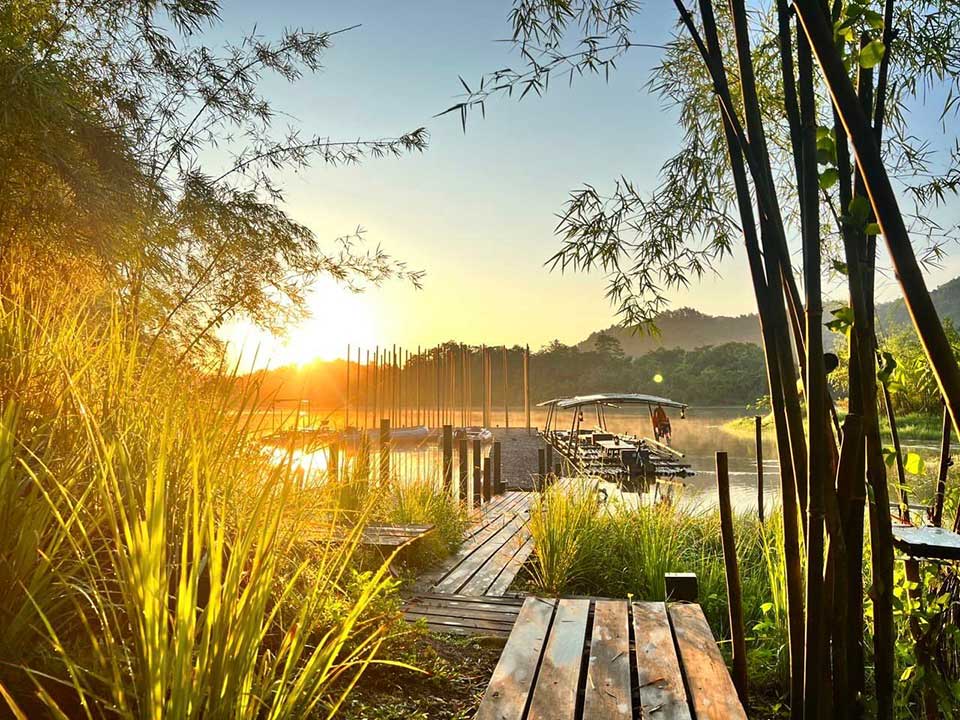Through the programs, we hope to create a network of connections between tourists - product developers - destinations and localities to promote responsible tourism practices.
Sustainable tourism moving towards Net Zero tourism is no longer a trend, it has become an existing need. According to a survey by Booking.com (2023), in Vietnam alone, 97% of tourists want to participate in sustainable tourism destinations.

Accordingly, this program aims to introduce a model of sustainable tourism practices towards Net Zero, from planning to operational practice. Welcoming guests from May 2022, Nho Village - Lang Nho Lake in Da Mai village, Dien Khanh district, Khanh Hoa province is a pioneering natural picnic area in the first Glamping and Pop-Up Resort model in Vietnam.
The design focuses on Lang Nhut Lake with two hot and cold streams originating from Hon Ba nature reserve. Here, visitors can participate in wonderful, exciting natural experiences with rustic activities that have been upgraded to a professional level.
Notably, we can mention the "Tam Ta" activity such as forest bathing - stream bathing - waterfall bathing, enjoying relaxation and refreshment right in the arms of mother nature.
Visitors can also participate in other ecological exploration activities such as walking through the forest, wading through streams, going through hiking trails, traveling to Lang Nho Lake, cycling, flying kites, harvesting agricultural products...
In particular, the campus is spacious to organize collective activities such as: Team building, summer camps, professional activities or agricultural activities connecting with farmers, allowing visitors to experience rural life together. Forest Owner.
According to Mr. Nguyen Manh Binh San - owner of Village Nho, one of the three principles of implementing sustainable tourism is to practice three actions at the same time: Saving natural space and environment; Cultural context, unique cultural works available and finally the responsibility to return exploited resources.
Restoring the ecosystem, maximizing green infrastructure, and building without environmental impact by using prefabricated structures are important criteria throughout the village construction process.
To have an area safe enough for sustainable tourism, this place has a total area of 165 hectares but more than half is the 80 hectare core protection belt - a defined area that can convey the message of sustainability.
Activities from planning to operation all maintain the principle of limiting emissions. Electric cars, bicycles, and bamboo are the main means of transportation in the village.



